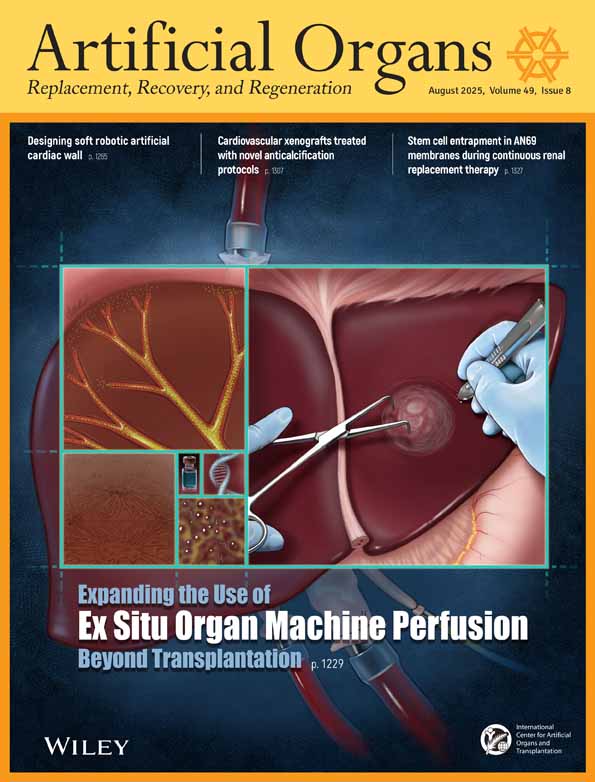Polypropylene Hollow Fiber Oxygenators: Effect of the Sorption of Perfluoropolyethers
Abstract
Abstract: The introduction of microporous polypropylene hollow fibers in recent years has brought considerable advances to blood oxygenators. However, lifetime and assembly problems are still unresolved. In this work we tried to rate the oxygen permeation velocity by turning the fibers more hydrophobic through the sorption of a perfluorocarbon. Fomblin HC/25, a perfluoropolyether, is well known for its low surface tension and high affinity for oxygen. Celgard X10, X20, and X30 commercial hollow fibers were tested. The hollow fibers showed high affinity for the perfluoropolyether; swelling was clearly shown. A new system for the measurement of oxygen permeation velocity was developed. The oxygen transport velocity was not significantly changed after sorption. The Celgard microporous hollow fibers impregnated with perfluoropolyether showed no water permeation after 2 months of use, reducing one of the most serious problems in the lifetime of these types of fibers.




